Introduction
This class project inspired me to branch out and try a new variation on an old skill. My final piece is a modular textile pattern, which can be used to make a variety of geometric textile designs. I’ve created 128 of these multi-colored pieces using yarns of a determined color palette to create a geometric art piece with dynamic viewer-controlled motion components. The final sculpture is roughly 8 feet wide by 4 feet tall.
Vision & Inspirations
A big portion of my background is in creating soft objects and textiles. Crochet is an art form practiced all over the world, and although we have knitting and weaving machines, crochet can’t be done by a machine. [1] I’m a long-time practitioner of this skill, it has been passed down in my family. And I was recently traveling to a place called Kullu Valley in India which is well-known for its crocheted handicrafts. I decided to try to create a design which uses types of stitches which are ubiquitous across the world and draw the design in a visual manner so that it will be understandable and reproducible by anyone who crochets regardless of language.
One of my primary goals with this project was to explore color to achieve an aesthetic that could remind onlookers of India and/or Hindu aesthetics. I love vibrant colors but it’s usually not an aesthetic used in Western culture, where options such as black are preferred. [2] So I prioritized the use of color throughout this project, settling on a color scheme that I was happy about but was out of my comfort zone.
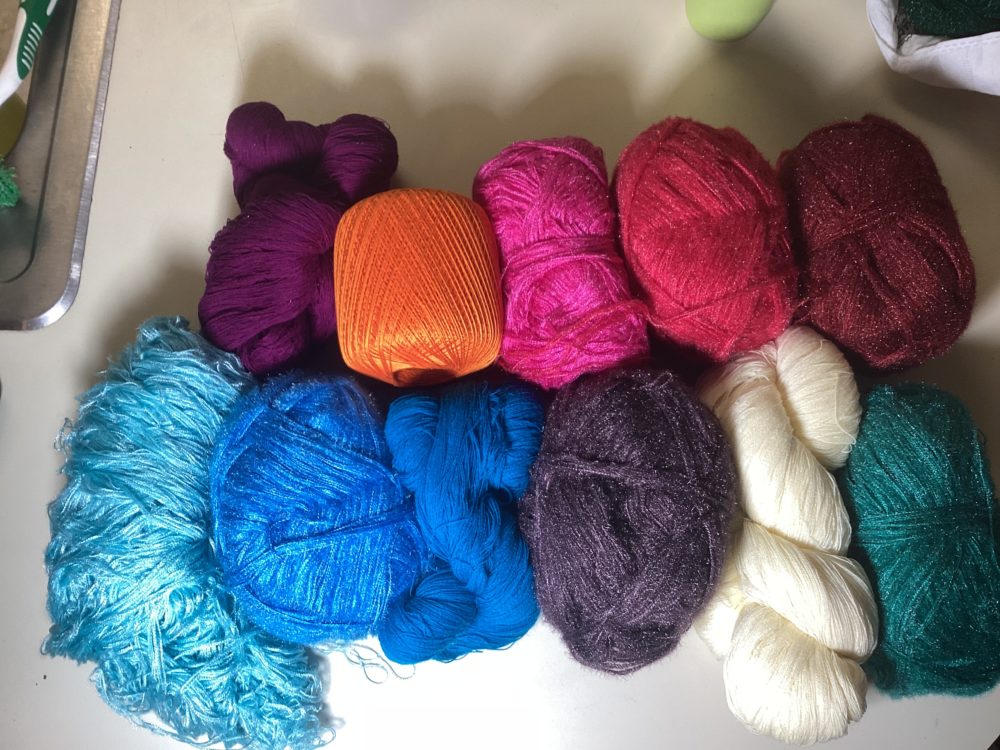
I chose to make the colors and sculpture shape look like a peacock. Peacocks are not only beautiful and colorful, but they are known as the vehicles on which certain Hindu gods ride. I saw peacock designs everywhere when I was traveling throughout India while working on this project, so I snapped a lot of photos for inspiration.
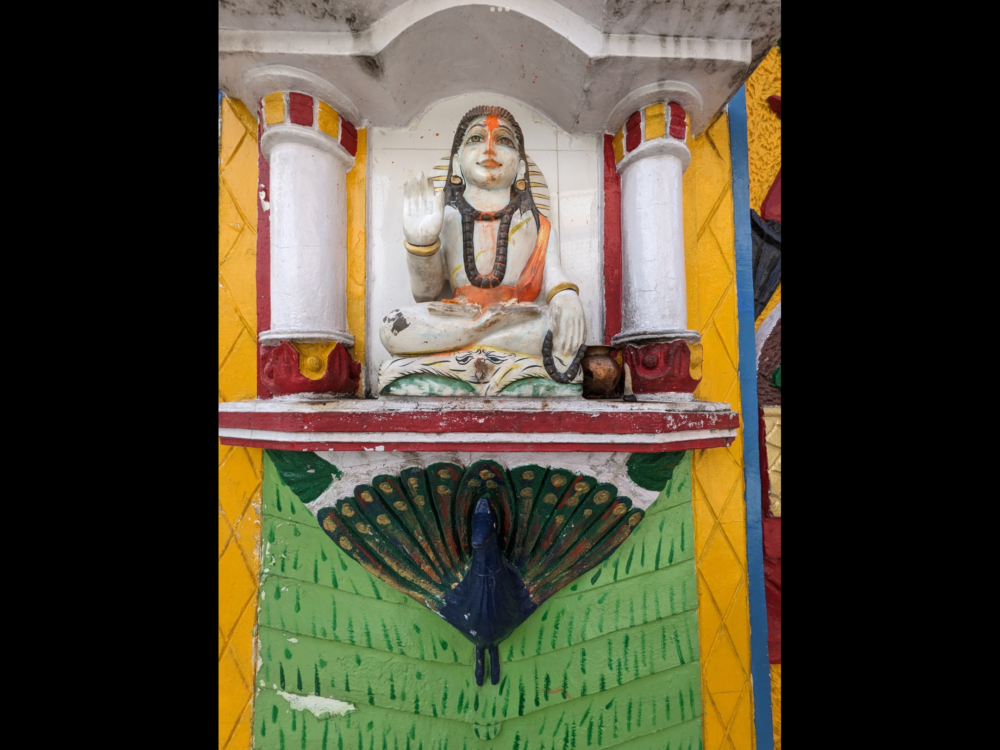
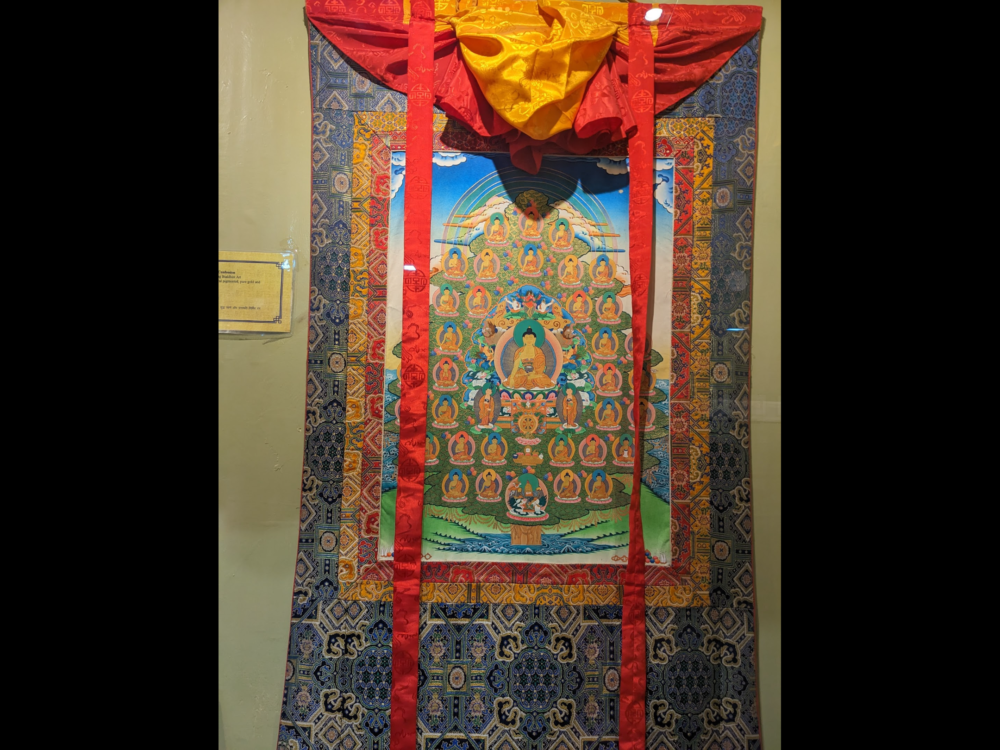
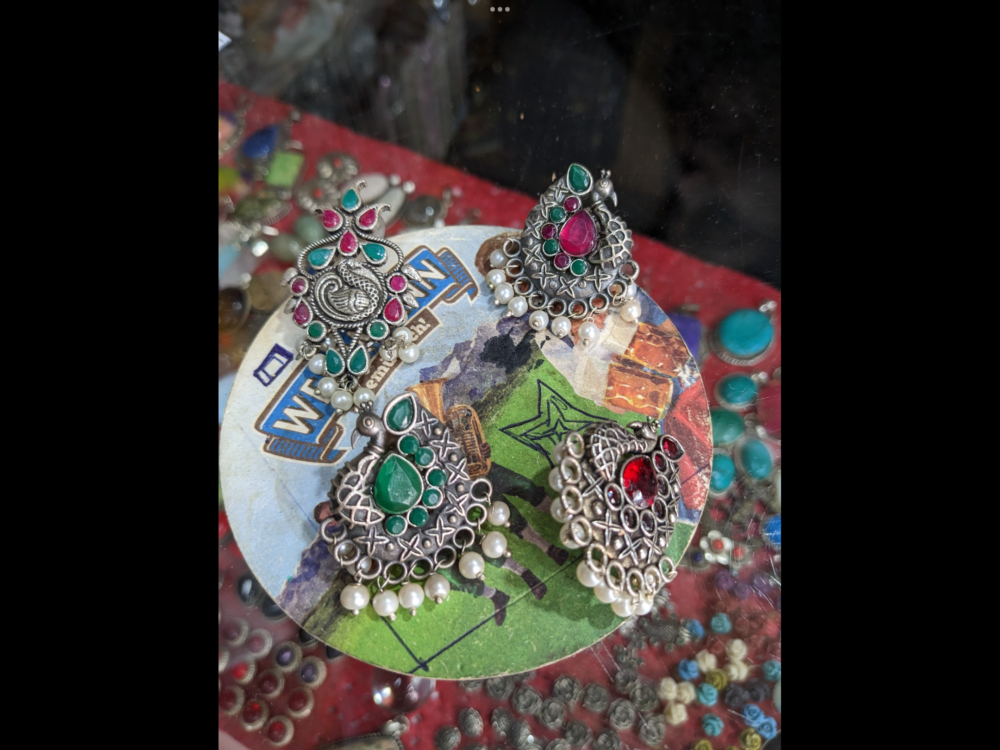
These two photos of a unique shawl and socks from the state of Himachal Pradesh, India best represent the aesthetic that I’m going for. The artists made these items using variations of a classic pattern called a Granny Square. In one case, multiple types of yarns are combined into the same piece. Both show techniques for joining squares which were new to me, and so I was excited to try them out.
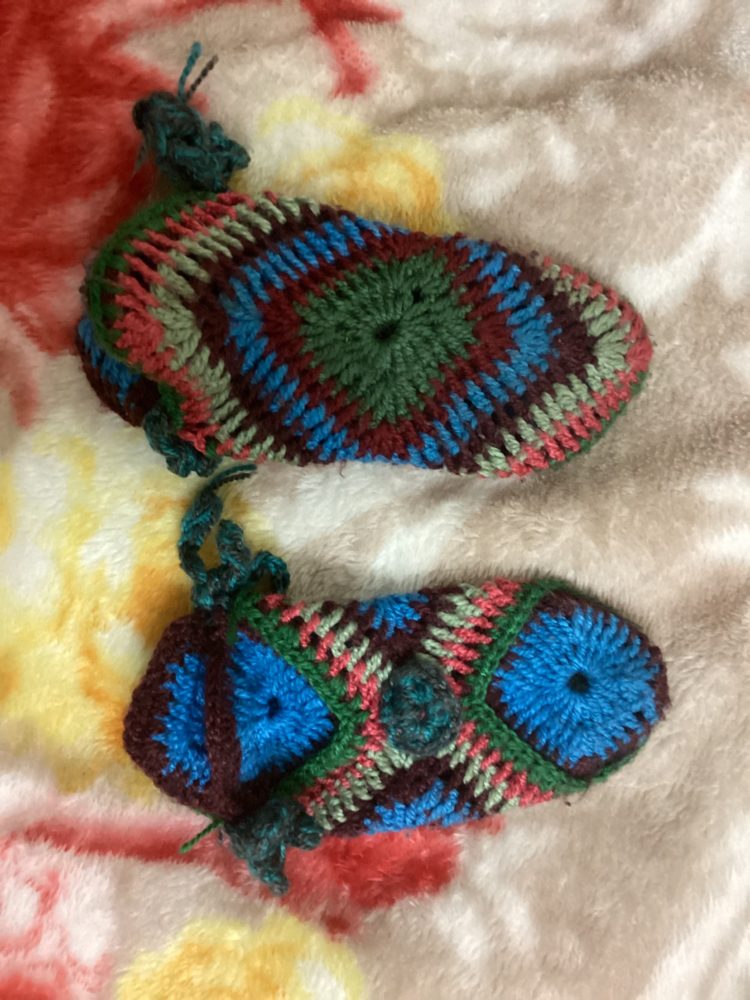
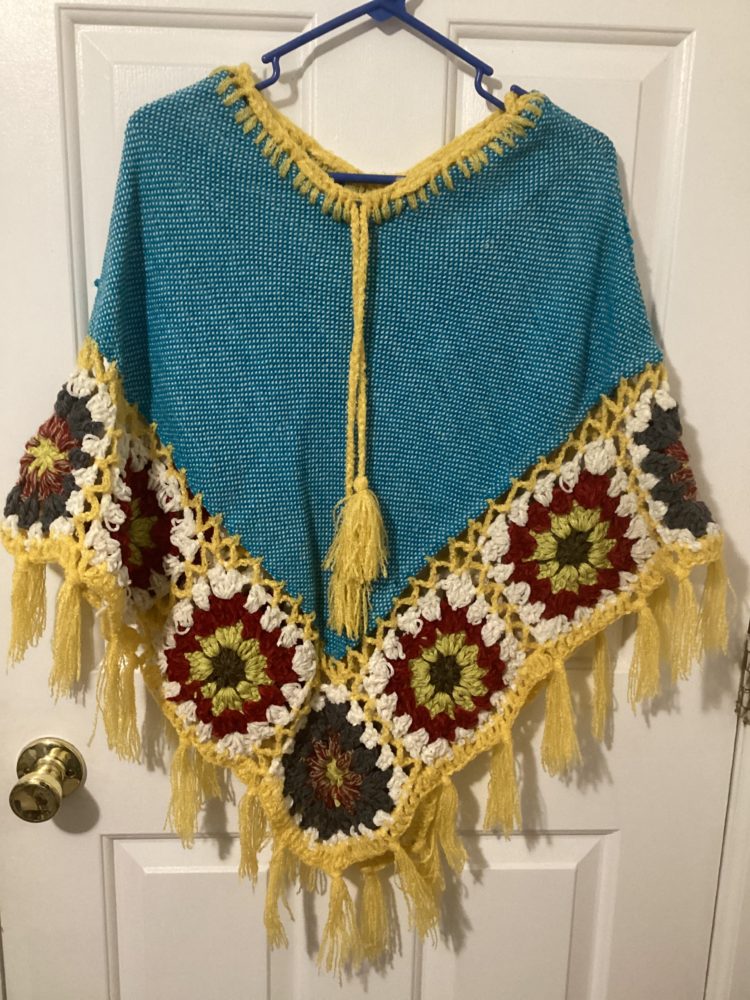
After striking up a conversation with the proprietor of the shop, I was honored to be a breakfast guest at the home of Kamlesh, who made the socks that I bought. I told her that I also crochet and wanted to make something for her. She requested a plate warmer and told me the colors she desired. She loved the final product, so this gave me more inspiration and motivation regarding the color scheme and design of this project.
Sketches & Design Plans
Creating the crochet design
I first began by designing a new pattern for a small crocheted triangle. I find triangles to be an interesting shape, yet it’s not an easy one to create with cochet. I was inspired by the crochetkingdom pattern [3], but this needed some adjustments for what I was looking for. The yarn I’m using is really thin, so I didn’t want to be working so many stitches inside other stitches. Instead, I designed an open pattern where the stitches went into chain loops, making the pattern go more quickly. And I made my design a little smaller. It was difficult to get a pointy triangle and find the right size. But it took just 2 iterations to get it right.
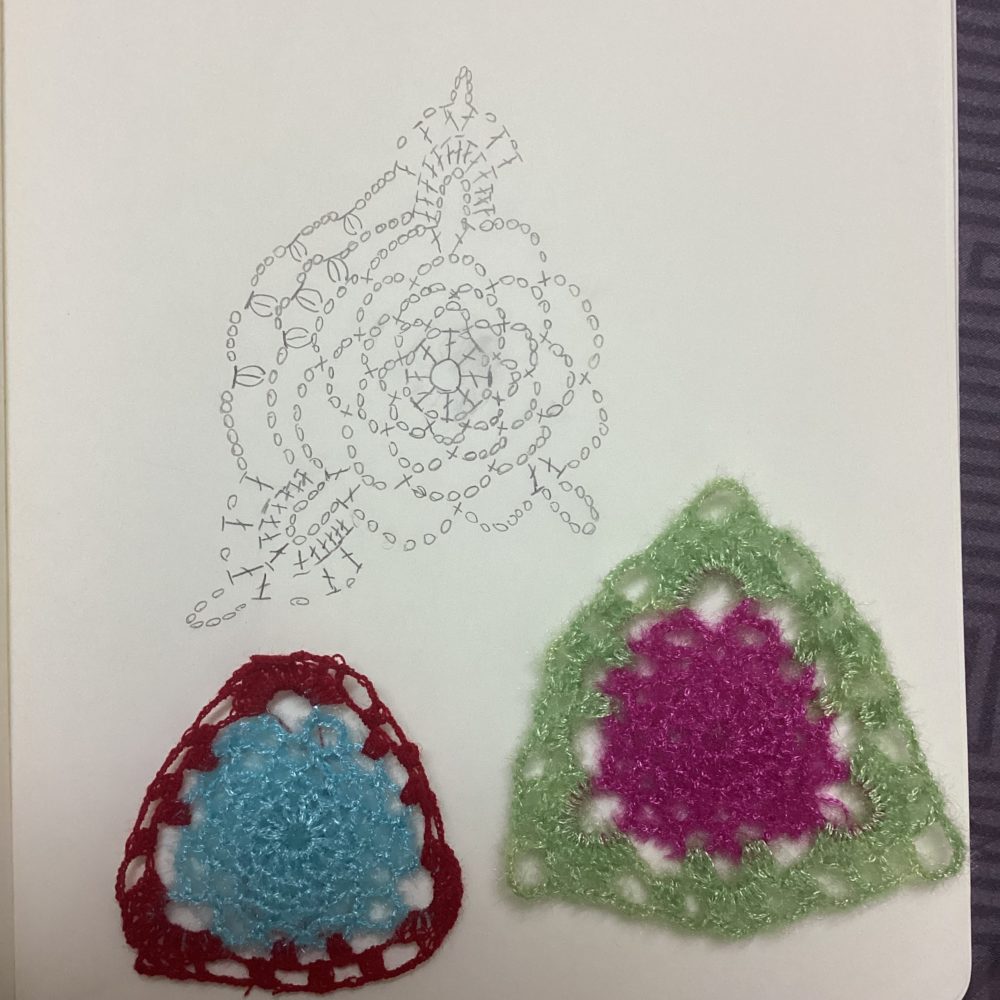
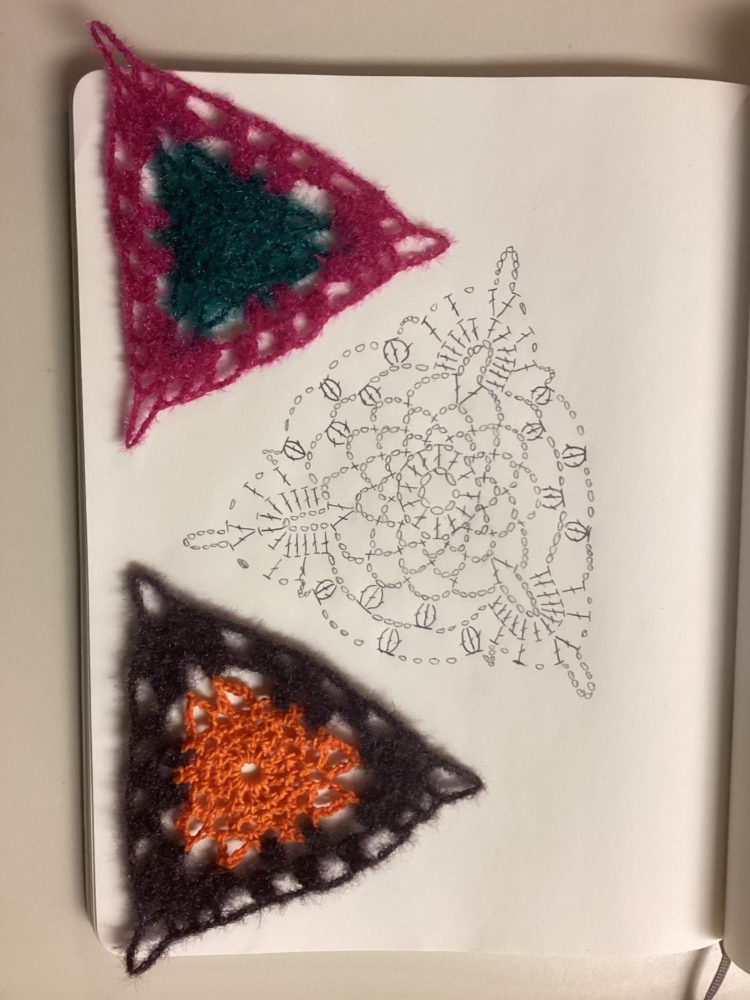
I think that the triangular crochet design has turned out to be a great design! It works fast like I hoped it would, it holds its shape well and I like the size. It’s easy to extend the size by adding more layers, just as you do in a regular granny square. Inspired by the traditional Granny Square pattern, but with a center that looks like a classic pineapple doily or a Spirograph drawing, I’m excited to use this pattern for many types of shapes. Since triangles can tesselate as a flat design, or be used in many polygonal shapes such as tetrahedrons, icosahedrons and dodecahedrons, many types of items could be made.
I think the Granny Square pattern is recognizable by quite a lot of people, even if they don’t know the name of it. So my belief is that clothes and home goods made with this triangle motif will give a homely yet contemporary feel. I look forward to making beanies, wall art, and purses using this design.
Using the design for a textile sculpture
For this semester’s class, I tried to create a large sculpture using this new triangle design. I used a stiffener to harden the triangles hoping that they would hold their shape so that they could be combined into a large polygon design. Working in this direction, I made multiple 3d model designs, both to help visualize the sculpture’s topology, and to create a physical structure for the textile to scaffold upon. These models utilized existing models from Thingiverse [4] and [5] to form the basis of the design.

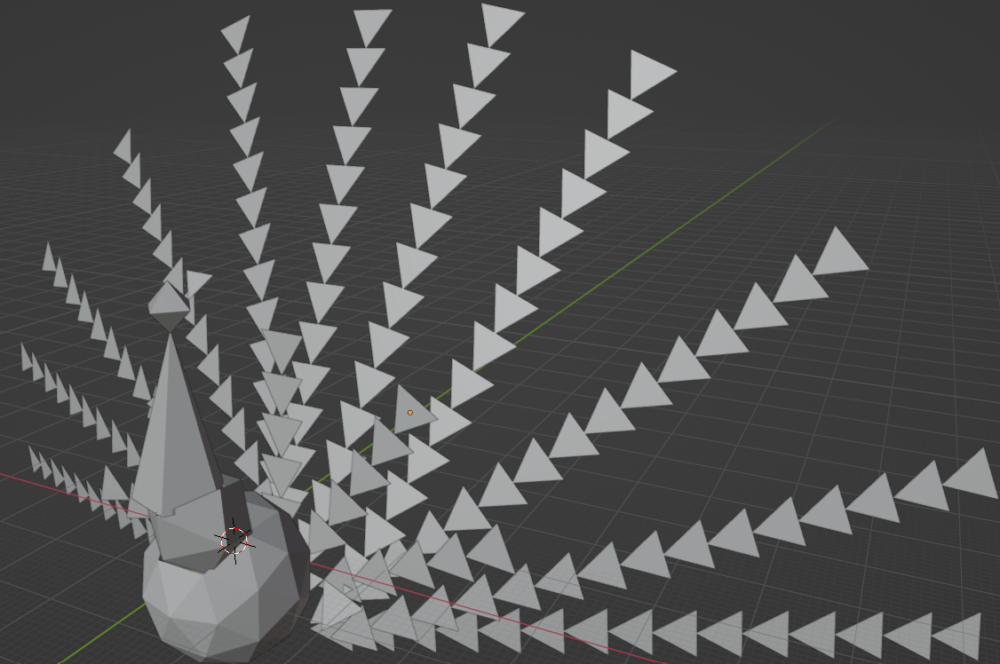
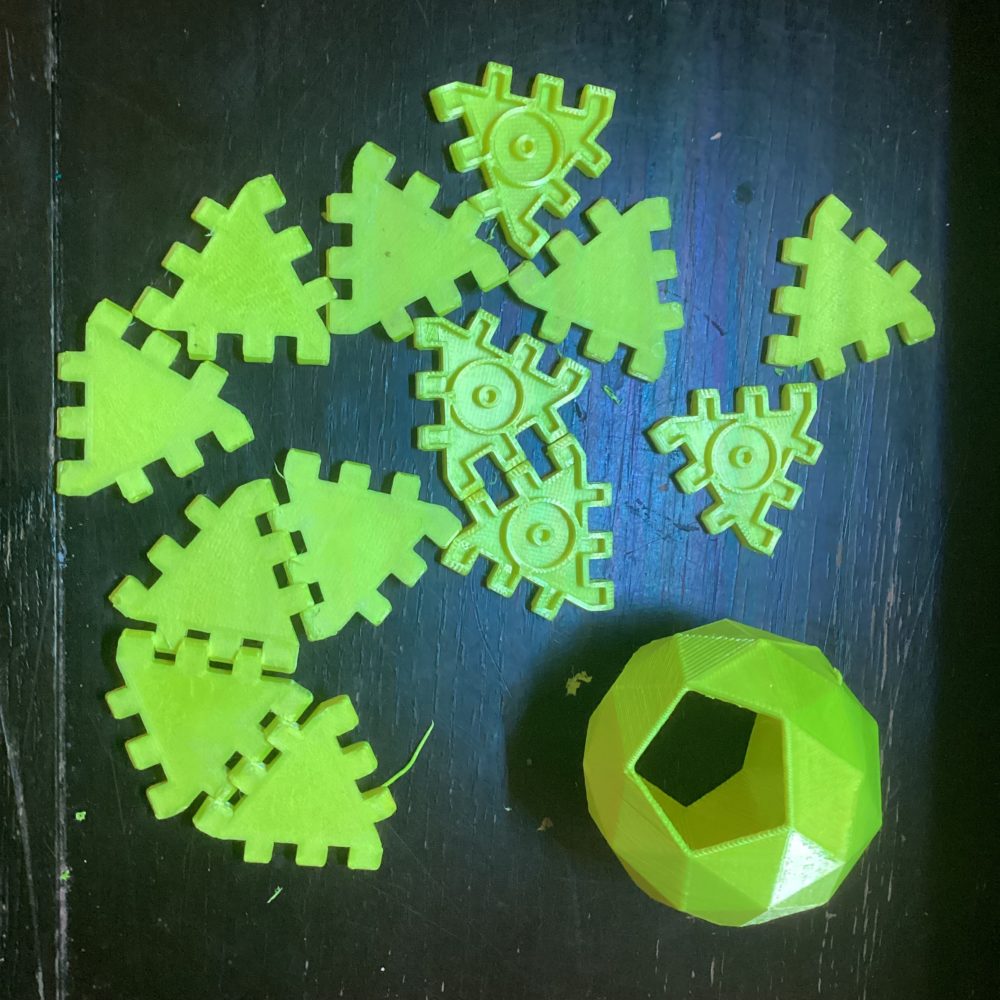
After working in this direction for most of the semester, I finally came to the conclusion that the yarn triangles would not be strong enough to hold the shape on their own. Over the course of just a few months, the sculpture would droop all the way to flat I believe, and it wouldn’t be reliable enough to incorporate dynamic elements. After some additional experimenting, I decided that incorporating other materials like wooden dowels and 3d printed plastic pieces to help hold the shape ended up being distracting to the overall aesthetic.
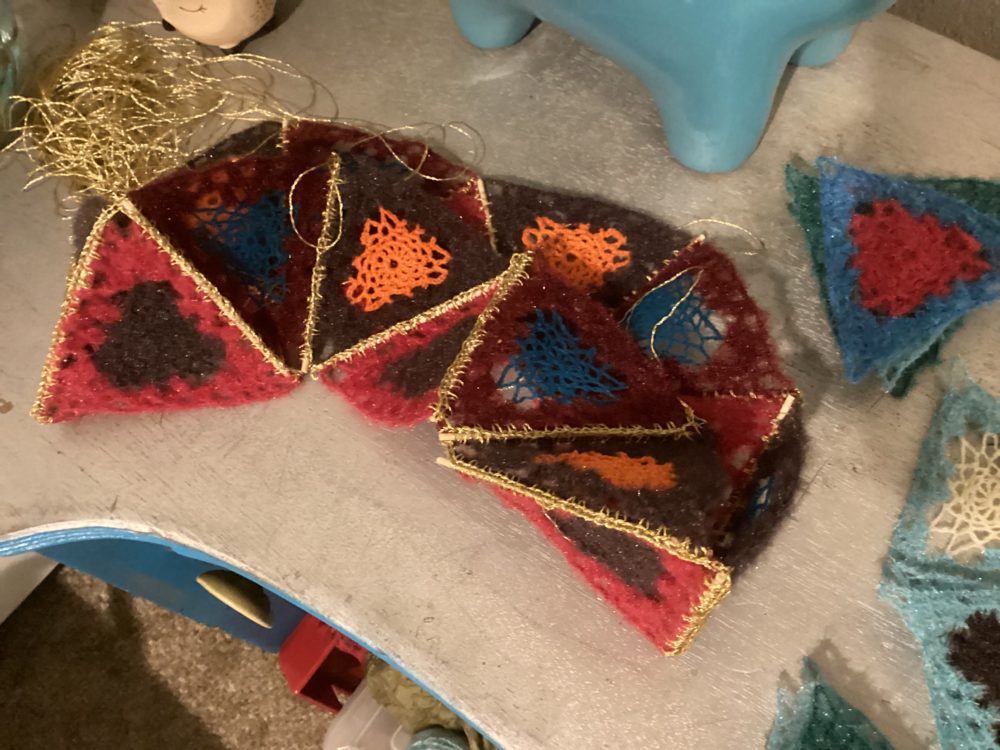
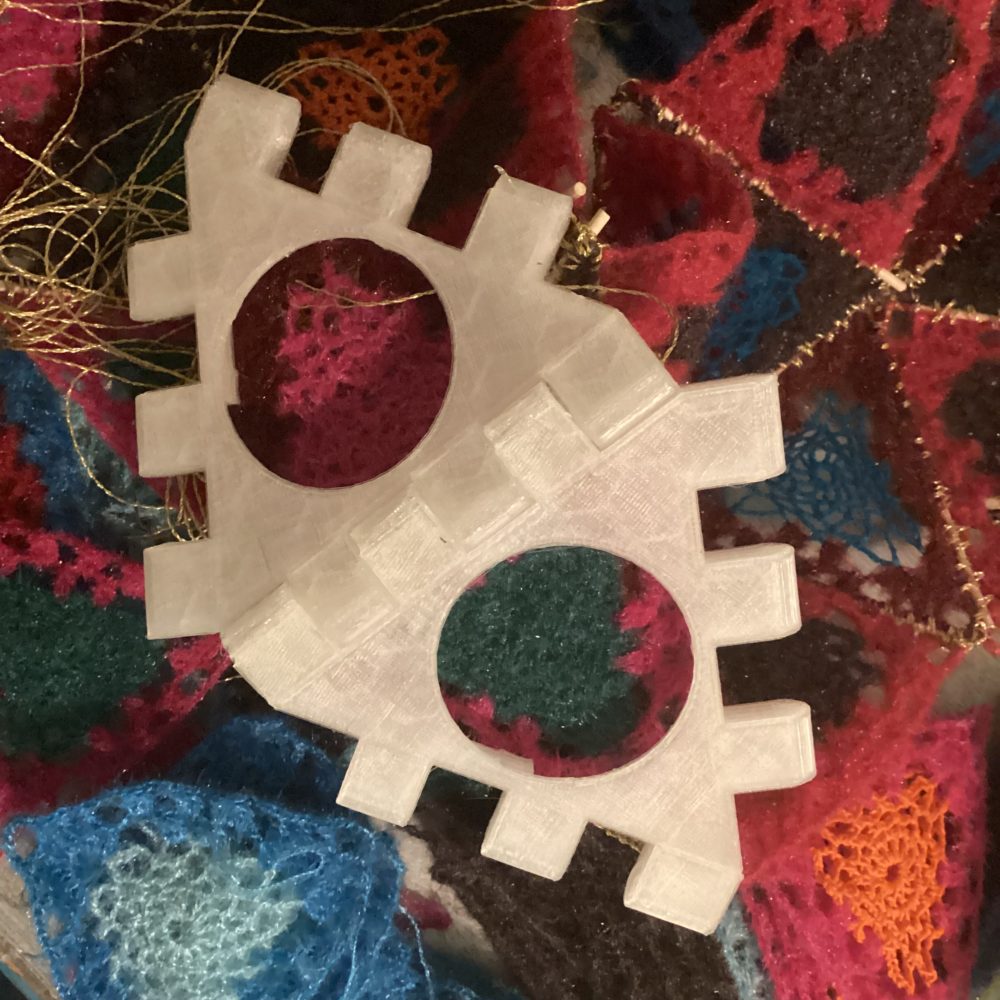
So after multiple pivots for the sculpture, I made a new design which has more of a 2 dimensional feel, using 4 triangle motifs stitched together into tetrahedrons. I improvised a wood and metal structure to give shape the final sculpture, and utilized invisible thread to make the feathers appear to float.
Adding motion to the sculpture
The final step for this project is to create a dynamic component. Since the sculpture represents a peacock, I thought it would be fun to create a kinetic motion where the feathers move. I used an Arduino MCU along with an ultrasonic sensor and a stepper motor to create a system where proximity of a viewer would be detected, triggering some slight twirling motions in the feathers themselves. While the mechanism is working, at this time it is not connected to the sculpture and will require further design iterations to incorporate. The feathers can be twirled by hand, rotating around a swivel on the top to prevent knotting, and so far it has been sturdy enough to hold its shape and form.
Sources
- https://www.crochetconcupiscence.com/is-there-such-a-thing-as-a-crochet-machine/
- https://www.thejuggernaut.com/why-the-west-is-afraid-of-color
- https://www.crochetkingdom.com/category/borders-stitches-and-motifs/crochet-triangles/
- https://www.thingiverse.com/thing:5027364
- https://www.thingiverse.com/thing:2823268

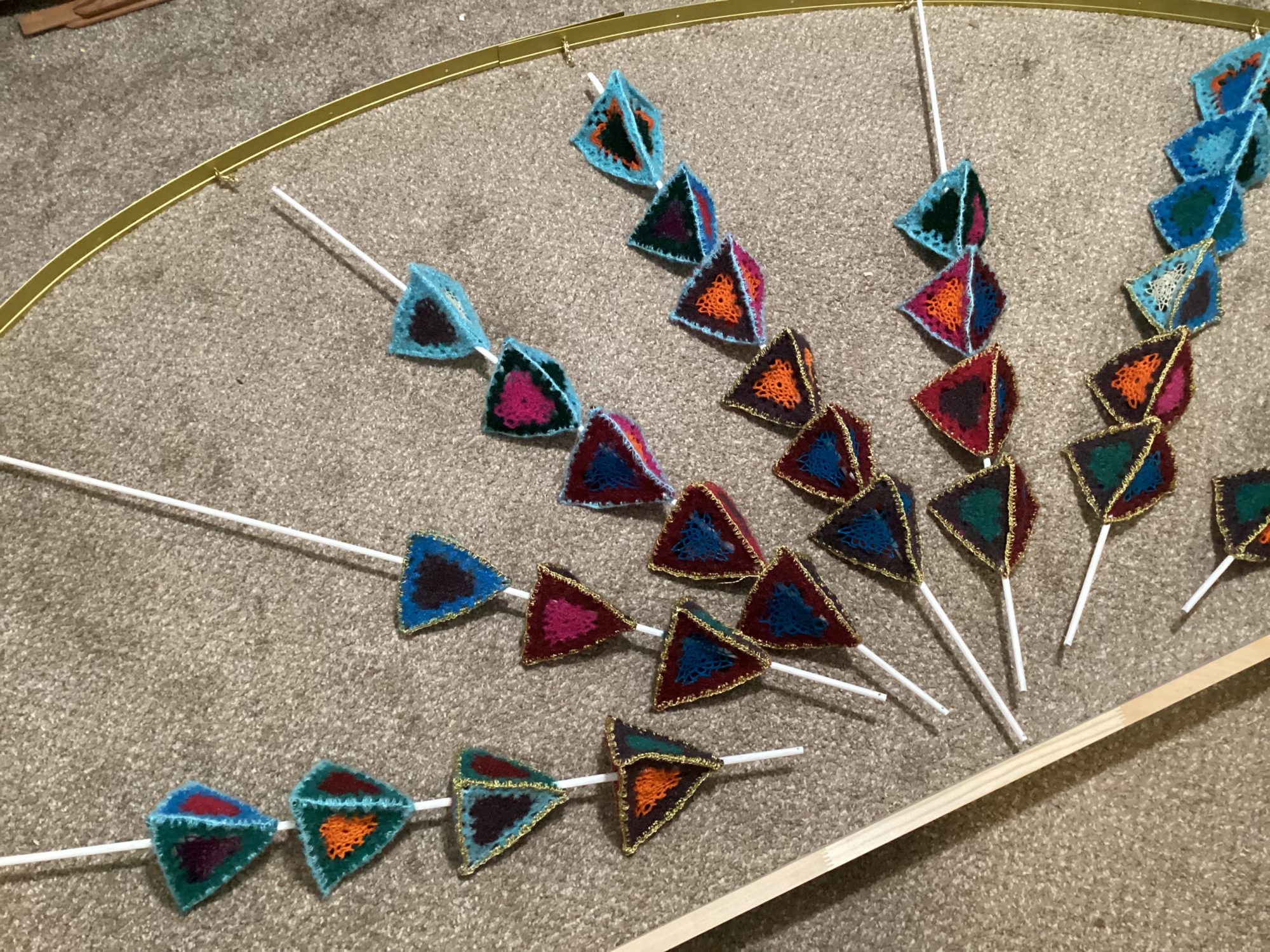
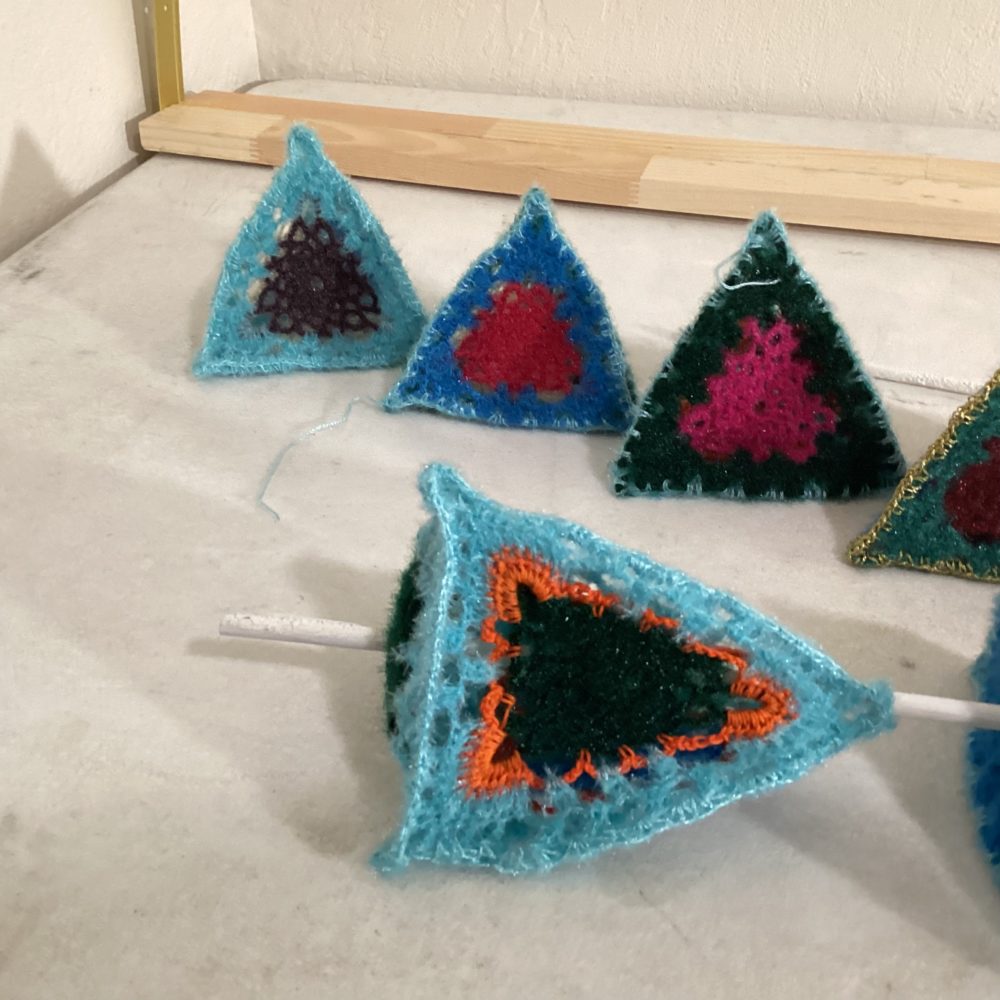
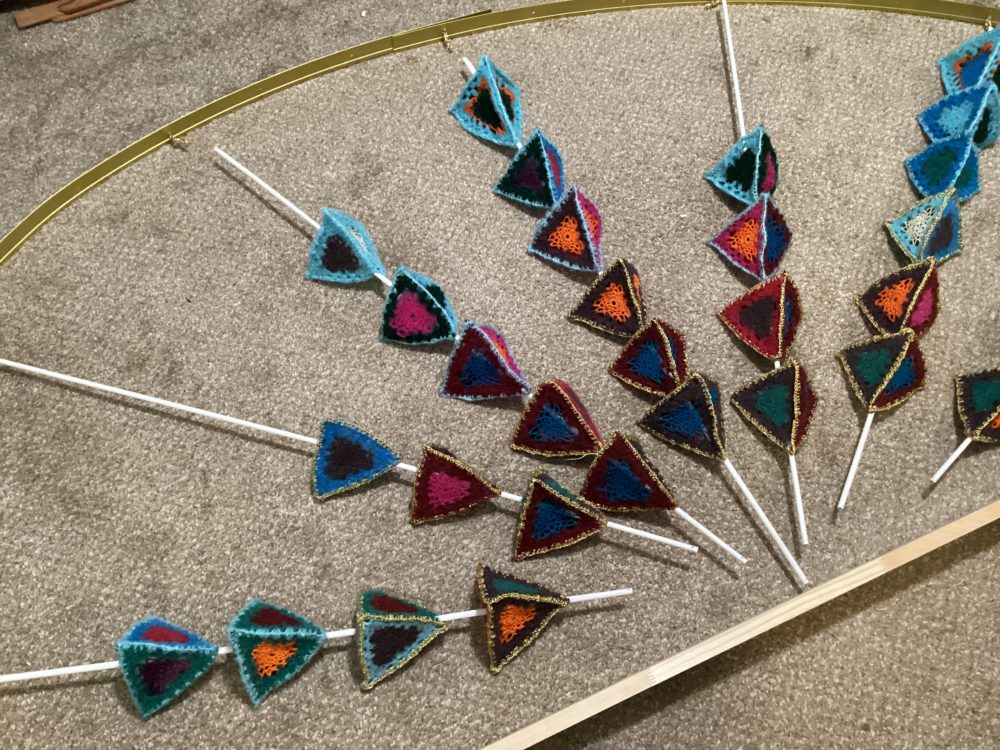
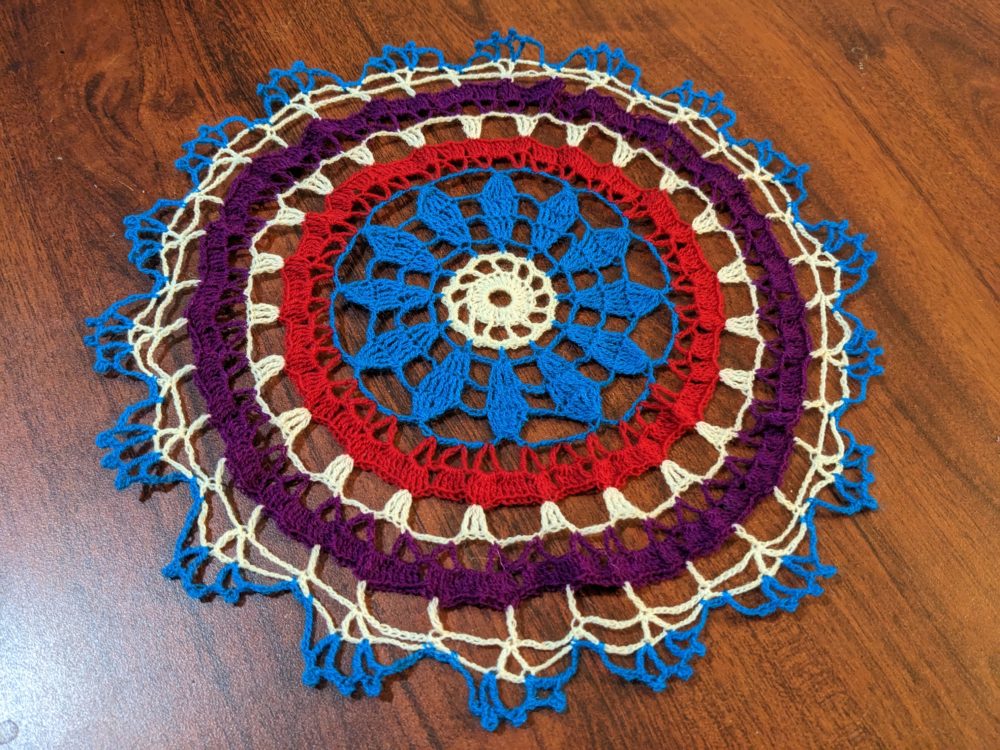
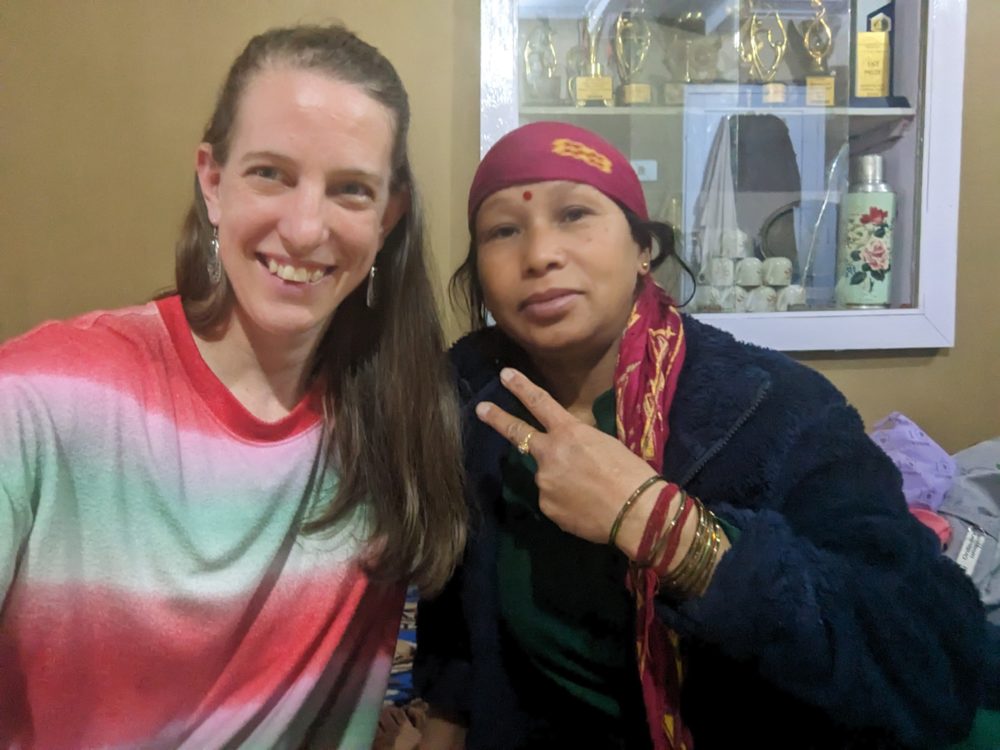
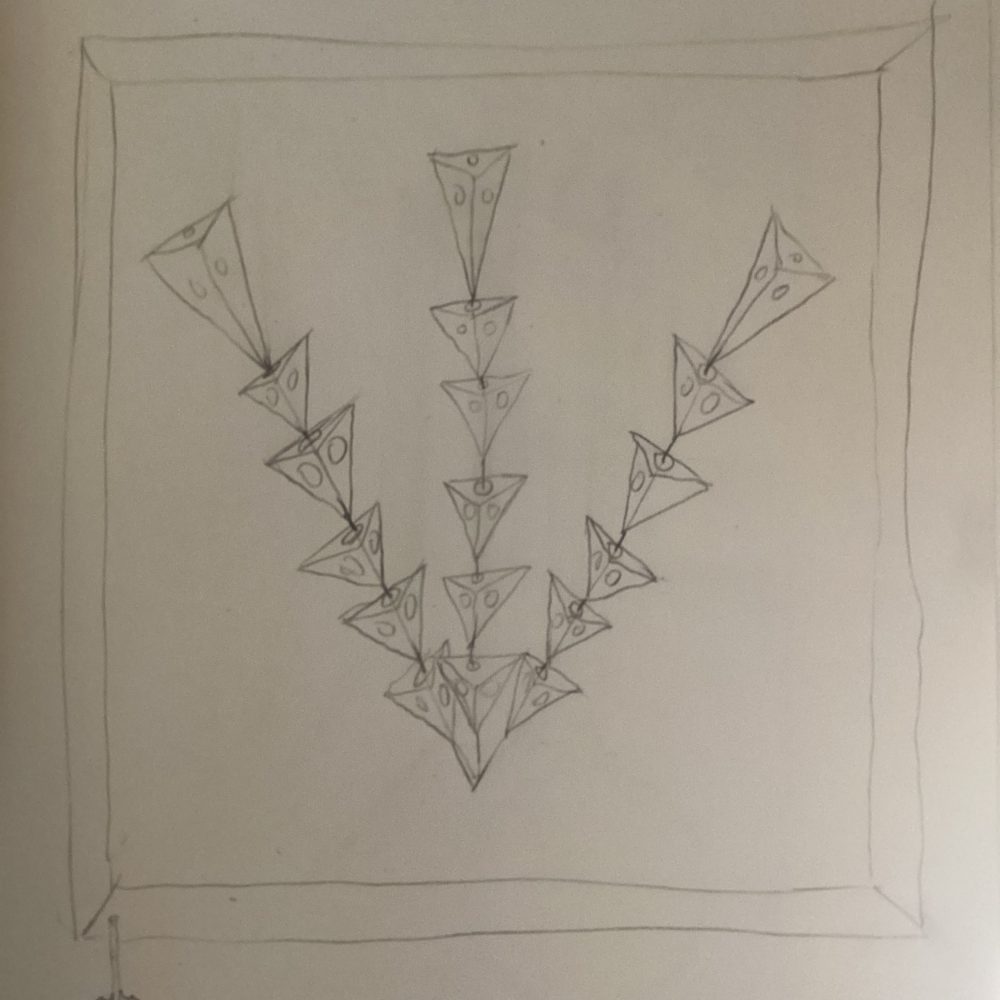
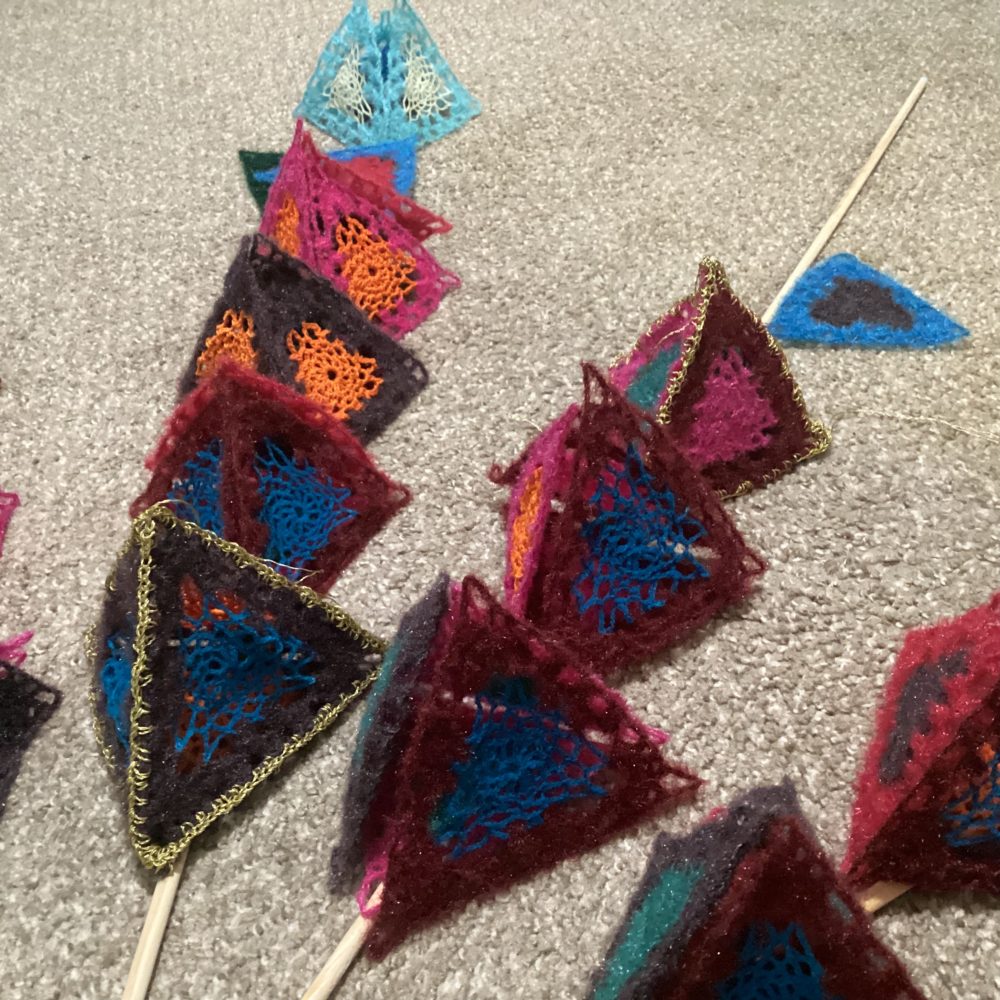

1 Comment. Leave new
Very cool to see the Hindu inspiration here! A cool project with a unique aesthetic and I appreciate the work you must’ve put into the textile work. Awesome to see!